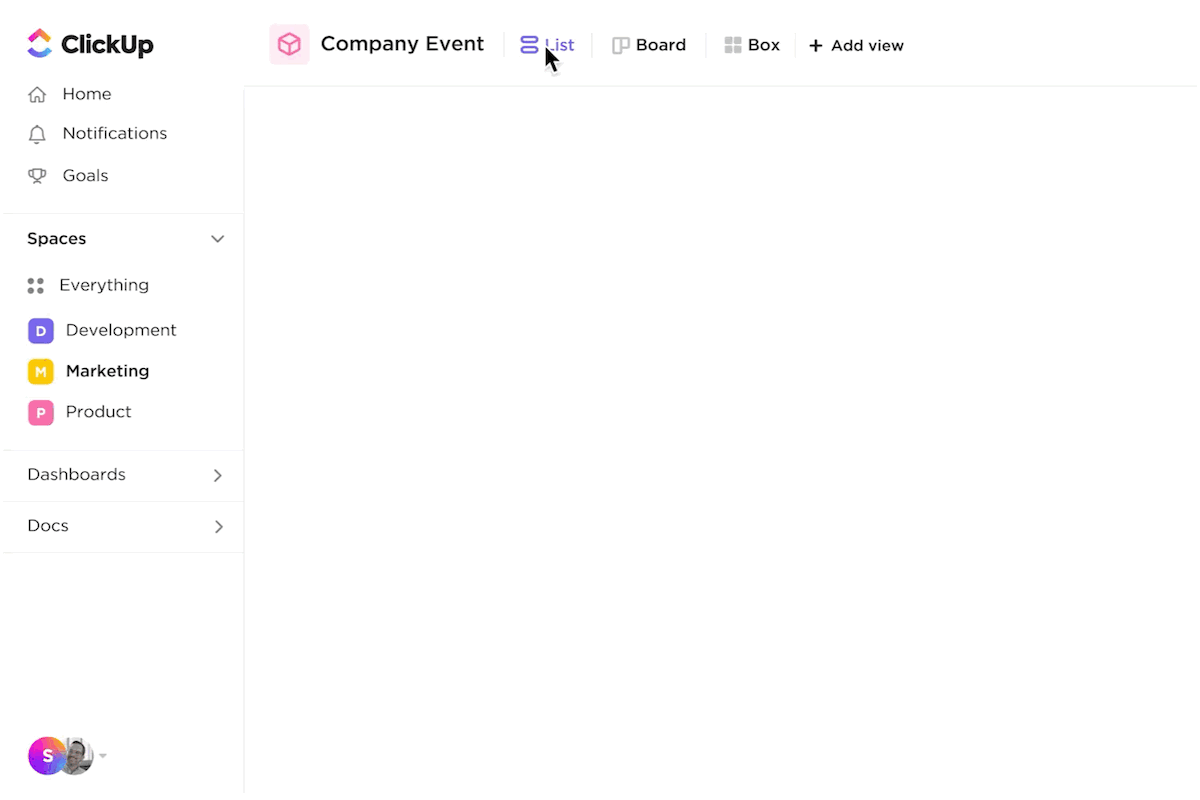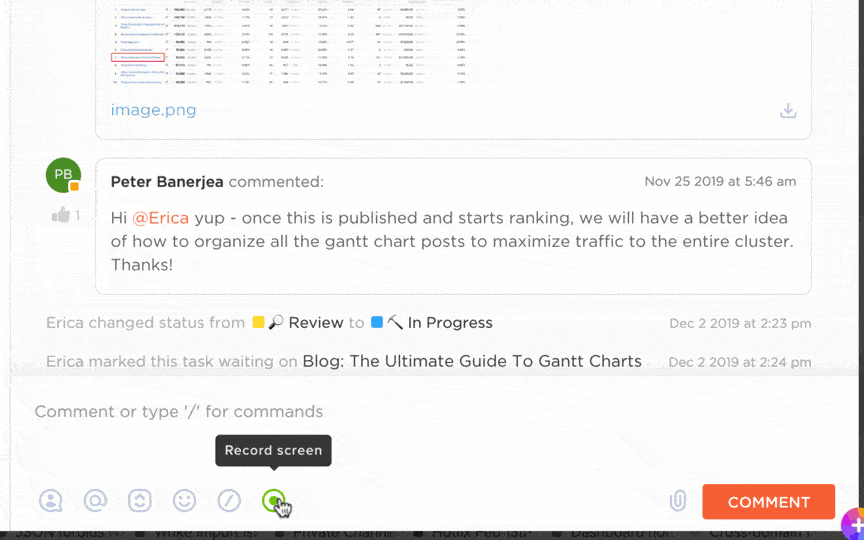إن الفريق ليس مجموعة متجانسة من الأشخاص - فبينما قد يعمل الجميع على تحقيق نفس الهدف، فإن كل عضو في الفريق يتخذ مسارًا فريدًا لتحقيقه. يركز البعض على الصورة الكبيرة، بينما يهتم البعض الآخر بالأمور الصغيرة. يزدهر بعض أعضاء الفريق في المجموعات، بينما يقدّر البعض الآخر العزلة والاستقلالية.
سواء كنت ترغب في فهم شخصيتك المهنية أو معرفة ما الذي يجعل أعضاء فريقك يتسمون بالتميز، ستجد الإجابات التي تحتاجها من خلال تقييم أنماط العمل المختلفة. سيقوم هذا الدليل بتفصيل الأنماط الستة الأكثر انتشارًا لمساعدتك على تعلم كيفية تكييف سير عملك لاستيعاب الأساليب المهنية المختلفة.
ما هو نمط العمل؟
أسلوب العمل هو نهجك السائد في عملك ومهامك المحددة وبيئة العمل. ويتم تحديده من خلال مجموعة كبيرة من العوامل، أبرزها:
- السمات الشخصية
- أسلوب التواصل
- العادات
- المعتقدات والقيم
- الخبرات السابقة
- التفضيلات
يؤثر أسلوبك في العمل على كل جانب من جوانب عملك اليومي. فهو يعكس كيفية تنظيمك لمهامك، وتقبلك للملاحظات، وتعاملك مع تلك الأيام الصعبة المليئة بالتوتر والفوضى. كما أنه يشير أيضاً إلى ما إذا كنت تزدهر ضمن فريق أو تفضل أن تكون وحيداً. 🐺
 img/
img/
عزز الإنتاجية من خلال تبسيط المهام واستخدام طرق عرض ClickUp القابلة للتكيف لتنظيم مهامك ودعم جميع أنماط العمل
في حين أن أنماط العمل ثابتة نسبيًا، فهي ليست ثابتة على الإطلاق. قد يتطور أسلوبك المهيمن بمرور الوقت أو يتغير لاستيعاب مهام ومشاريع محددة.
إن فهم أسلوبك أمر بالغ الأهمية لزيادة إنتاجيتك ومستوى الاستمتاع الذي يجلبه لك عملك. إذا كنت قائد فريق أو مدير فريق، فإن معرفة أساليب عمل أعضاء فريقك تجلب لك مجموعة من الفوائد، أبرزها
- التفويض الفعال للعمل
- تبسيط التعاون
- تعزيز الشمولية
- تآزر أفضل للفريق
ستة أنواع من أنماط العمل
يمكن تقسيم أنماط العمل إلى ستة فئات عريضة لها نقاط القوة والضعف الخاصة بها. ستجد أدناه لمحة عامة عن كل منها، تليها بعض النصائح المفيدة حول إدارة الفريق بأساليب مهنية متنوعة. سنشارك أيضًا بعض النصائح الودية لتحسين أسلوب عملك الخاص، لذا ترقبوا معنا! 🤩
1. منطقي/مستقل
الأشخاص ذوو أسلوب العمل المنطقي هم مستقلون حلالي المشاكل الذين يقدرون العقل والاستقلالية أكثر من أي شيء آخر. فهم يتبعون بوصلتهم الخاصة ويتبعون نهجًا منهجيًا للغاية في العمل، ويحللون كل شيء حتى أدق الفروق الدقيقة. 🔬
يمكن الوثوق بالعاملين المنطقيين/المستقلين بفضل سلوكهم المنطقي/المستقل لإنجاز العمل دون تهاون. فهم لا يحتاجون إلى (وغالبًا ما يكرهون) الإمساك باليد، لذا فإن الإدارة التفصيلية هي أحد أسوأ كوابيسهم. يقوم هؤلاء الأشخاص بأفضل أعمالهم عندما تعطيهم المدخلات اللازمة وتضعهم في طريقهم.
تشمل نقاط القوة الرئيسية للأشخاص ذوي الأسلوب المنطقي الكفاءة، والتركيز الحاد، والتفكير النقدي المتميز. كما أنهم لا يحتاجون إلى الكثير من الإشراف، مما يجعلهم جديرين بالثقة والموثوقية.

إنشاء لوحات معلومات مفصلة للحصول على عرض عالي المستوى لأي مشروع واتخاذ قرارات استراتيجية بسهولة استنادًا إلى البيانات في الوقت الفعلي
على الجانب الآخر، الموظفون الذين يندرجون تحت هذه الفئة لا يتعاملون دائمًا بلطف مع الآخرين، ومن المحتمل ألا ترى في سيرتهم الذاتية عبارة "لاعب فريق ممتاز"، وقد تحتاج مهارات التواصل لديهم إلى القليل من العمل. في بعض الحالات، قد يكون لديهم أيضًا مشاكل مع السلطة، حيث يعتقدون أن الأمر إما طريقهم أو الطريق السريع.
وطالما أنك تمنح عضو الفريق الذي يتمتع بأسلوب العمل هذا حريته ومساحته، يمكنك أن تطمئن إلى أن العمل سيتم إنجازه بشكل صحيح.
2. التعاونية
في تناقض صارخ مع الفئة السابقة من العاملين، فإن أعضاء الفريق المتعاونين كلهم متعاونون. ستجدهم العصف الذهني للأفكار ومساعدة بعضنا البعض، وكوننا أول من يحتسي المشروبات بعد العمل. 🍹
مثل هؤلاء الأشخاص من السهل العمل معهم، وموهبتهم في التواصل الاجتماعي تجعلهم ممتعين في محيطهم. هذا لا يعني أن كل ما يقومون به هو اللعب فقط دون عمل، حيث أنهم منتجين للغاية في المشاريع الجماعية ويمكنهم تقديم مساهمات كبيرة بأفكارهم.
بعض أفضل سمات الأشخاص ذوي أسلوب العمل التعاوني هي:
- الانفتاح الذهني والانبساطية
- الطاقة العالية
- مهارات التعامل مع الناس
العيب الرئيسي للموظفين المتعاونين هو عدم الاعتماد على النفس عندما يتعلق الأمر بالعمل المهم و صنع القرار . قد يترددون في اتخاذ خطوات كبيرة ما لم يكن هناك شخص ما حولهم لمناقشة الأمر، وقد يؤدي العمل بمفردهم إلى قلق غير منتج.
3. داعم
يشترك أعضاء الفريق الذين يتمتعون بأسلوب عمل داعم في العديد من السمات مع أقرانهم المتعاونين، على الرغم من أنهم أقل وضوحًا وحزمًا. لن تراهم عادةً في دفة القيادة يقودون الطريق ولكن تحت سطح السفينة، مستخدمين قوتهم ومثابرتهم للحفاظ على إبحار السفينة. ⚓
هذا لا يعني أن المحترفين الداعمين لا يصنعون مديرين جيدين . بل على العكس - يمكن أن يزدهروا في المؤسسات التي تطبق أسلوب الإدارة التشاركية و تحفيز الفريق لتقديم أفضل ما لديهم.
أعضاء فريق العمل الداعم بأسلوب العمل الداعم هم العمود الفقري للفريق الناجح للأسباب التالية:
- إنهم مستمعون نشطون ومتعاطفون
- يمكنهم الارتقاء بالآخرين وبناء جو من الثقة
- هم على استعداد للتدخل والمساعدة عند الضرورة
هذه النقطة الأخيرة سلاح ذو حدين، فهي أيضاً مصدر أكبر مشاكل العاملين الداعمين. فهم يميلون إلى الإفراط في ملء جدولهم الزمني لمساعدة الآخرين، مما قد يؤدي إلى الإرهاق. وإذا ما اقترن ذلك بعدم رغبتهم في طلب المساعدة، يمكن أن يؤدي ذلك بسهولة إلى الإرهاق المزمن .
كما أن أعضاء الفريق الداعمين يتجنبون النزاعات وغالبًا ما لا يعبرون عن آرائهم، لذلك قد لا ترى الأفكار الجيدة النور أبدًا. لهذا السبب يجب تشجيعهم على التعبير عن آرائهم وأن يكونوا أكثر ثقة.
4. القرب
يتميز أسلوب العمل عن قرب بـ التواصل المستمر. يفضل الأشخاص الذين يتبنون هذا النمط التواصل المباشر وجهاً لوجه مع الآخرين بدلاً من الرسائل المباشرة ورسائل البريد الإلكتروني، ويقدرون التعاون في الوقت الحقيقي على الترتيبات غير المتزامنة.
أعضاء الفريق الذين يعتمدون على القرب قادرون على التكيف بشكل كبير، وهي نعمة ونقمة في نفس الوقت. فمن ناحية، هذا يجعلهم من ناحية زملاء فريق ممتازين يعملون بشكل جيد في مجموعات وإعدادات مختلفة، وهم يتقبلون التغيير بسهولة أكثر من معظم الناس.
ومع ذلك، قد تخرج هذه المرونة عن السيطرة وتمنع عضو الفريق من تطوير عملياته وآرائه الخاصة. قد يندمجون في الخلفية أكثر من اللازم ويفشلون في تقديم وجهات نظر فريدة من نوعها. 😶
كما أن الفرد الذي يركز على القرب يعتمد بشكل كبير على القريب، التغذية الراجعة المستمرة لذلك قد يحتاجون إلى مساعدة أكثر من غيرهم. لهذا السبب قد لا يكون العمل عن بُعد هو الخيار الأفضل لهم.
5. الموجه نحو التفاصيل
هل تعرف ذلك الشخص الذي يتحقق ثلاث مرات من التقرير للتأكد من عدم وجود خطأ مطبعي واحد؟ أو ذلك الشخص المحب لجداول البيانات الذي لا يطيق الانتظار حتى يعلمك عن VLOOKUP؟ حسنًا، هذا هو الممثل المثالي لأسلوب العمل الموجه نحو التفاصيل. إنهم دائمًا ما يبذلون جهدًا إضافيًا لضمان عدم تفويت أي شيء ، ومن الصعب أن تجد شخصًا أفضل منهم في تنظيم سير عملهم . 🤓
مع وضع ذلك في الاعتبار، ليس من المستغرب أن يزدهر هؤلاء الأفراد كمحاسبين ومحللين ومحترفين في وظائف أخرى تتطلب عملاً دقيقًا. وإلى جانب الاهتمام الذي لا مثيل له بالتفاصيل، تشمل نقاط قوتهم الرئيسية ما يلي:
- الموثوقية
- الاجتهاد
- الدقة في التفكير
أما بالنسبة للجوانب السلبية، فليس من غير المألوف أن يغفل الأشخاص الذين يهتمون بالتفاصيل عن الهدف النهائي. فقد ينشغلون بالتفاصيل إلى الحد الذي يجعلهم مهووسين بالتفاصيل، مما قد يؤدي إلى إبطائهم بشكل كبير.
6. الموجه نحو الأفكار
يحتاج كل فريق إلى شخص صاحب رؤية يحلم بأحلام أكبر من الآخرين، ويُعرف هذا الشخص بأنه عضو الفريق الموجه نحو الأفكار. على عكس أولئك الذين ينتمون إلى الفئة السابقة، فهم لا يهتمون بالأشياء الصغيرة أو يهتمون بتفاصيل المشكلة، بل يريدون فقط إيجاد طريقة مبتكرة لحلها. 💡

قم بتخصيص اللوحات البيضاء بسهولة عن طريق إضافة المستندات والمهام والمزيد - مثالية لأعضاء الفريق الذين لديهم أسلوب عمل موجه نحو الأفكار
بطبيعة الحال، فإن أسلوب العمل الموجه نحو الأفكار يحكم جلسات العصف الذهني وهو متقبل بشكل كبير لوجهات نظر الآخرين وملاحظاتهم. هم من تلجأ إليهم عندما تصطدم بحائط مسدود، حيث سيجدون طريقة لهدمه. المزايا الرئيسية لهؤلاء الموظفين هي
- الإبداع والخيال المتميز
- الطموح والتفاؤل
- الموقف الذي يمكن القيام به
الآن، التفكير المستمر خارج الصندوق يجعل الأشخاص الذين يتجهون نحو الأفكار غير منظمين إلى حد كبير. فهم يحبون الفوضى الإبداعية، والتي قد تكون في بعض الأحيان أكثر من اللازم للتعامل معها. قد يكافح هؤلاء الموظفون من أجل الالتزام بالجدول الزمني أو ميزانية المشروع، مما قد يؤدي إلى العديد من التعقيدات.
كيفية إدارة فريق عمل بأساليب عمل مختلفة
أحد واجباتك الرئيسية كمدير هو فهم أنماط عمل فريقك و التكيف معها، وهذا ليس بالأمر السهل، لذا دعنا نشاركك بعض النصائح المفيدة التي يمكن أن تحدث فرقاً كبيراً. 🏆
1. استخدم الأدوات المناسبة لكل نمط عمل
سواء كان فريقك في الموقع أو عن بُعد بالكامل، فمن المحتمل أن تستخدم أدوات مختلفة للأشخاص و إدارة المشروع من جدولة التطبيقات إلى متتبعات الإنتاجية . ولكن هل هذه الأدوات قابلة للتكيف بما يكفي لمراعاة أنماط العمل المختلفة؟
إذا لم يكن الأمر كذلك، فأنت بحاجة إلى حل متعدد الاستخدامات يستوعب جميع التفاصيل المذكورة أعلاه. بعبارة أخرى، أنت بحاجة إلى أداة مثل ClickUp . وهو يقدم مجموعة شاملة من ميزات إدارة المشاريع التي تساعدك على تحقيق أقصى استفادة من كل عضو من أعضاء الفريق والحفاظ على تفاعلهم.
بفضل العديد من طرق عرض ClickUp ، يمكنك تقديم المعلومات بطرق مختلفة تناسب أساليب العمل الخاصة بالموظفين. استخدم الخرائط الذهنية والجداول الزمنية من أجل رسم خريطة للعمليات للمفكرين المرئيين، أو التبديل إلى القوائم أو الجداول لأولئك الذين يفضلون هياكل أبسط.
يوفر ClickUp أيضًا المرونة اللازمة لمنح كل عضو من أعضاء الفريق المقدار المحدد من المدخلات التي يحتاجها. استخدم كليك أب كليب لتزويد الموظف المستقل بمراجعة سريعة لمهمته باستخدام تسجيل الشاشة، وتركه ليقوم بعمله على أكمل وجه.

شارك تسجيلات الشاشة لإيصال رسالتك بدقة دون الحاجة إلى سلسلة رسائل بريد إلكتروني أو اجتماع شخصي مع Clip by ClickUp
لأعضاء الفريق المتعاونين وأصحاب الأفكار, كليك أب السبورات البيضاء هي الحل الأمثل. فهي تعزّز العمل الجماعي والتفكير في الصورة الكبيرة، مما يسمح للجميع بالبقاء على نفس الصفحة. وللأشخاص المهتمين بالتفاصيل مستندات ClickUp حرية غير محدودة للتعمق وإنشاء إجراءات تشغيل موحدة قوية لا تترك أي شيء. سواء أكنت بحاجة إلى وضع الخطوط العريضة لمشروع صغير لمرة واحدة أو مشروع خطة عمل كاملة ، يمكن أن يكون ClickUp Docs رفيقًا ممتازًا.

استخدم مستندات ClickUp Docs لإنشاء مستندات ويكي قوية وأوصاف المشاريع وإجراءات التشغيل الموحدة
وأخيراً، سيقدّر أعضاء الفريق الداعمين والقريبين من الفريق التعليقات المخصصة -طريقة سهلة لـ إنشاء
/مرجع/ https://clickup.com/blog/action-items// عناصر العمل /%href/
أثناء التعاون في الوقت الفعلي. بغض النظر عن أنماط العمل السائدة في فريقك، هناك ميزة ClickUp للجميع! 🙌
2. تكييف تواصلك مع أنماط العمل المختلفة
إذا كنت ترغب في تحقيق أقصى استفادة ممكنة من فريق عمل متنوع، ستحتاج إلى التخلي عن الممارسات القديمة مثل مراجعات الأداء الثابتة أو الاجتماعات الموحدة. بدلاً من ذلك، يجب عليك اعتماد نهج أكثر مرونة يأخذ في الحسبان أنماط عمل محددة، خاصة فيما يتعلق بتفضيلات التواصل. 🗣️
على سبيل المثال، سوف يقدّر الموظفون الذين يعتمدون على القرب من بعضهم البعض الوقوف اليومي أو غيرها من عمليات التحقق المتكررة، في حين قد لا يحتاج أعضاء الفريق المستقلون إلى أكثر من اجتماع واحد في الشهر.
وبالمثل، عادةً ما يفضل الأشخاص الذين يركزون على التفاصيل عادةً إيقاع الاجتماع بمواعيد محددة مسبقًا، بينما لا يمانع أصحاب الأفكار في اتباع نهج أكثر تساهلاً. كما يقدّر الأولون أيضًا الملاحظات والمدخلات المستندة إلى البيانات، بينما يسعد الأخيرون بالدردشة والعصف الذهني.
إذا لم تكن متأكدًا من كيفية التعامل مع كل موظف وفقًا لأسلوب عمله، فإن أفضل شيء يمكنك القيام به هو أيضًا أبسط شيء - اسأل. شجّع أعضاء الفريق على الإفصاح عن تفضيلاتهم، وسوف يقدّرون أن يتم الاستماع إليهم.
3. طابق المهام مع نقاط القوة
أحد الأسباب الرئيسية للتعرف على أساليب عمل فريقك هو استخدام هذه المعرفة عند تفويض المهام. وإلا فقد تهدر موهبة شخص ما في عمل لا يناسبه. وكما قال آينشتاين: "إذا حكمت على سمكة من خلال قدرتها على تسلق شجرة، فإنها ستعيش حياتها كلها وهي تعتقد أنها غبية"
الخبر السار هو أنه بمجرد معرفة أسلوب عمل كل فرد، فإن إسناد المهام المناسبة لكل عضو في الفريق لن يكون مشكلة. إذا كان هناك بعض المهام الثقيلة المتعلقة بتحليل البيانات، فستعرف أنها يجب أن تُسند إلى شخص موجه نحو التفاصيل بدلاً من شخص موجه نحو الأفكار. إذا كان المشروع يحتوي على العديد من الأجزاء المتحركة والتبعيات، فستحتاج إلى إشراك موظفين متعاونين وإيجاد مهمة مستقلة لشخص مستقل.
الآن، قد لا تكون عملية التوفيق هذه سهلة، خاصةً في البداية، قبل أن تكون قد رسخت سير عمل معين. إذا كنت بحاجة إلى المساعدة في البقاء على رأس عبء عمل فريقك, انقر فوق المهام يمكن أن تفعل العجائب للحفاظ على كل شيء منظمًا بدقة.
بفضل أكثر من 35 تطبيقًا متعدد الاستخدامات من ClickUp Tasks ، يمكنك استخدام مهام ClickUp لكل شيء بدءًا من التخطيط اليومي إلى الصورة الكبيرة استراتيجيات العمليات . إعداد المهام ذات الحالات والتبعيات المخصصة و قوائم المراجعة لإبقاء الجميع على نفس الصفحة وضمان التعاون السلس.

يمكنك البحث عن حالات المهام أو تعيينها أو فرزها في عرض قائمة ClickUp لمعرفة التقدم المحرز في جميع الأعمال
يأتي ClickUp أيضًا مع الكثير من الأتمتة والميزات المفيدة مثل المهام المتكررة، والتي تتيح لك تجنب الأعمال العادية وتوفير المزيد من الوقت لتحسين سير عملك وفقًا لأساليب العمل المختلفة.
كيفية تحسين أسلوب عملك
إن فهم أسلوب عملك الشخصي لا يقتصر فقط على الاستفادة من نقاط قوتك. وكما رأيت، فإن كل أسلوب يأتي مع أوجه قصور محددة يمكنك معالجتها للارتقاء بأسلوبك المهني إلى المستوى التالي. وفي حين تختلف الخطوات المحددة للقيام بذلك بين الأنماط، إليك نصيحتان عالميتان يجب اتباعهما.
1. راقب يوم عملك
إذا كنت تقوم بنفس العمل لفترة من الوقت، فمن الطبيعي أن تتحول إلى وضع الطيار الآلي في مرحلة ما. وهذا يجعل من الصعب ملاحظة أي مجالات للتحسين، لذا خذ خطوة إلى الوراء لتقييم يوم عملك بعناية.
أثناء قيامك بذلك، ركز على الأشياء التي قد تجدها مزعجة أو غير ضرورية أو مربكة. على سبيل المثال، قد تدرك أنك لا تحتاج إلى الكثير من نقاط التواصل مع قائد فريقك أو أنك تجد صعوبة في تحديد أولويات عملك.
بمجرد تحديد نقاط الألم هذه، انظر ما يمكنك القيام به بشكل مستقل لإصلاحها. على سبيل المثال، يمكنك استخدام ClickUp أولويات المهام لتنظيم عبء العمل الخاص بك أو أهداف النقر فوق الأهداف للحصول على نظرة عامة مرئية لتقدمك. 📈

أنشئ أهدافًا شخصية داخل ClickUp وحدد أهدافًا لتتبع تقدمك
جرّب أساليب مختلفة لضبط سير عملك وفقًا لأسلوبك المفضل. ستندهش من الفرق الهائل الذي يمكن أن تحدثه بعض التعديلات الصغيرة!
2. تحدث إلى رؤسائك
قد لا يكون لديك الحرية الكاملة لتكييف العمل حسب أسلوبك المفضل. بعض العمليات هي مسألة سياسات الشركة أو قرارات الإدارة التي يجب عليك الالتزام بها حتى تحصل على الضوء الأخضر لتغيير أي شيء.
لهذا السبب من المهم أن تناقش أسلوب عملك الخاص مع قائد فريقك وصناع القرار الآخرين. لا تتردد في التعبير عن مخاوفك أو اقتراح تغيير المسار. ففي النهاية، قد يعود التغيير بالنفع على الفريق بأكمله، لذا يجب أن يكون مديرك منفتحاً على تنفيذه.
إذا كنت تشعر أنه يمكن استخدام مجموعة مهاراتك ونهجك في العمل بشكل أفضل، فابحث عما يمكن القيام به لاستيعاب ذلك. ستكون أكثر سعادة وإنتاجية، حتى تتمكن من التركيز على القيام بأفضل أعمالك. 🌟
إنشاء تآزر قوي
إذا كنت مسؤولاً عن فريق عمل ذي أساليب عمل متنوعة، فلديك فرصة لخلق سير عمل محكم حيث يُكمّل الجميع بعضهم البعض. يتيح المزج بين المهام ومطابقتها مع نقاط القوة لكل عضو في الفريق التألق مع تقليل مخاطر عدم الكفاءة والإرهاق.
من خلال طرح منصة إدارة مشاريع متمكنة مثل ClickUp في هذا المزيج، يمكنك أن تطمئن إلى أنك لن تضيع في جميع تفاصيل وعمليات أسلوب العمل. إنشاء حساب ClickUp ودعنا نحول فريقك إلى لاعب من الدرجة الأولى! 🥇

